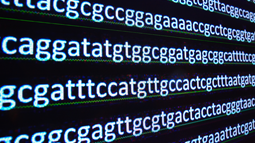A long-read sequencing method for assessing mRNA vaccine quality
The safety and efficacy of mRNA vaccines depend on mRNA quality. However, existing methods for characterizing mRNA are time-consuming and often cannot sensitively detect critical quality attributes. To address these shortcomings, researchers at the University of Queensland in Brisbane, Australia have developed VAX-seq, a long-read Nanopore cDNA sequencing protocol that provides a streamlined alternative to current industry standard techniques. The use of direct RNA sequencing for analyzing mRNA chemistry, including the detection of nucleoside modifications, is also reported. It is suggested that VAX-seq and other RNA sequencing methods will become central to the development and manufacture of novel mRNA vaccines.

VAX-seq improves on current methods for assessing mRNA quality
mRNA quality is currently assessed using methods such as RT-qPCR, chromatography, and capillary and gel electrophoresis with immunoblotting. VAX-seq improves these methods by characterizing mRNAs with a single-step protocol that can be performed in real-time, allowing for rapid testing of synthetic mRNAs shortly after manufacture.
Validation of the VAX-seq protocol
The VAX-seq protocol was validated with an enhanced green fluorescent protein (eGFP) mRNA, consisting of a 5’ T7 CleanCap® promoter, an alpha-globin 5’ UTR, an eGFP open reading frame, an AESmtRNR1 3’ UTR, a 126nt poly(A) tail, and a restriction enzyme (BsaI) digestion site. This was cloned into a pUC-57 plasmid backbone for manufacturing and subsequent linearization, before being used as a template for in vitro transcription.
After purification to remove residual DNA, RNA, and proteins, the sequence identity, length, and integrity of the mRNA transcript were confirmed with long-read cDNA sequencing, using the supporting Mana software for analysis. This included measuring the length of the poly(A) tail, which is a key quality attribute for determining translation efficiency, and detecting off-target mRNA contaminants, which can compromise the safety and efficacy of mRNA vaccines.
.
Analyzing mRNA chemistry with direct RNA sequencing
The use of direct RNA sequencing for characterizing mRNA vaccines would eliminate the need for reverse transcription and amplification steps, as well as simplify the analysis of nucleoside modifications. To verify the applicability of this approach, Gunter et al. used TriLink’s CleanCap® AG and N1-methylpseudouridine-5’-triphosphate to generate mRNAs incorporating N1-methylpseudouridine, as described in Henderson et al. mRNA yield, length, and purity were then evaluated with a range of different analytical methods.
While the observed yield of direct RNA sequencing libraries was lower than for matched cDNA sequencing libraries, with a higher associated error rate, direct RNA sequencing proved capable of detecting modified nucleosides in single mRNA vaccine molecules. This suggests direct RNA sequencing may be useful for analyzing mRNA vaccine chemistry.
Featured products: CleanCap® mRNA Capping Reagents, N1-Methylpseudouridine-5'-Triphosphate - (N-1081)
Related services: Analytical services
Article reference: Gunter, HM, Idrisoglu, S, Singh, S et al. mRNA vaccine quality analysis using RNA sequencing, Nat. Commun. 14, 5663 (2023). https://www.nature.com/articles/s41467-023-41354-y


